 |
Back
to The Internment of the Japanese Americans, 1942: Re-Enacting
the Policy Debate
Specific
Roles
Note:
one excellent source on any person in this list would be the obituary
published in the New York Times. See The New York Times Obituaries
Index, 1858-1968 (1970). For those who died post-1968, you
use the death-dates (given below) and look them up in the regular
Times index for the appropriate year.
WAR
DEPARTMENT
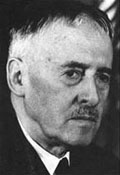 |
Henry
L. Stimson (1867-1950), known as “the Colonel”
because of his service during World War I, was Secretary
of War. Elderly, a Republican, and a man of immense prestige,
he had served in the same office under William Howard Taft
and as Secretary of State under Herbert Hoover. Franklin
Roosevelt brought him into the cabinet in 1940 to emphasize
that the nation faced a national emergency during which
partisan politics should cease.
Stimson
published a memoir, On Active Service in Peace and War
(1948). See also Elting E. Morison, Turmoil and Tradition:
A Study of the Life and Times of Henry L. Stimson (1960);
Geoffrey Hodgson, The Colonel: The Life and Wars of
Henry Stimson (1990); and David F. Schmitz, Henry
Stimson, the First Wise Man ( 2001). |
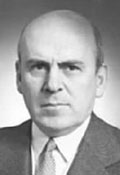 |
John
J. McCloy (1895-1989), Assistant Secretary of War,
was a central figure in the decision to relocate the Japanese
Americans in 1942. McCloy played important parts in later
policy debates including the question of whether to bomb the
concentration camp at Auschwitz in 1944 and the decision to
employ the atomic bomb in 1945. After World War II he served
as the administrator for occupied western Germany. Biography:
Kai Bird (a Carleton History major!), The Chairman: John J.
McCloy and the Making of the American Establishment (1992). |
 |
Gen.
George C. Marshall (1880-1959), chief of staff of
the Army, is widely hailed as the “architect of victory”
in the Second World War. He later served as Secretary of State
and Secretary of Defense and is remembered as the author of
the Marshall Plan for economic aid to devastated western Europe
(1947). See Forrest Pogue’s four-volume biography, George
C. Marshall, especially vol. 2 (1966). |
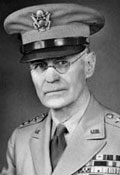 |
Lt.
Gen. John L. DeWitt (1880-1962), a career Army officer
of mediocre attainments who had held a variety of administrative
positions, commanded the Western Defense Command from December
1939 until June 1943. He was the officer directly in charge
of evacuating the Japanese and Japanese-Americans from the
western parts of California, Oregon, and Washington. For DeWitt
see the works cited below under Allen W. Gullion. |
| |
Maj.
Gen. Allen W. Gullion (1880-1946) had graduated from
West Point and also held a law degree. He worked his way up
through the Judge Advocate General’s department in the
Army, becoming Judge Advocate General in 1937 and Provost
Marshall General (his office headed the military police and
was in charge of prisoners of war) from July 1941 until April
1944. An expert on the treatment of prisoners of war under
the Geneva Convention, Gullion was an important behind-the-scenes
figure in shaping the internment policy. For information see
the various works by Roger Daniels such as The Decision
to Relocate the Japanese Americans (1975) and Peter Irons’s
Justice at War (1983). |
JUSTICE
DEPARTMENT
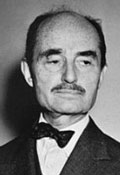 |
Francis
Biddle (1886-1968) had become attorney general in
September 1941 and held this post until 1945. After the war,
Biddle served as a member of the international tribunal that
tried Nazi leaders at Nuremberg. See Biddle’s memoir
In Brief Authority (1962) and Peter H. Irons, Justice
at War (1983). |
 |
J.
Edgar Hoover (1895-1972) was director of the Federal
Bureau of Investigation (FBI) from 1924 until his death. The
FBI is an agency within the Justice Department (Biddle’s
department), but Hoover acted autonomously much of the time.
Whatever else you may think about Hoover, note that his investigations
in 1941-42 turned up no evidence of espionage on the part
of Japanese and Japanese-American residents of the West Coast.
Biography: Richard Gid Powers, Secrecy and Power: The
Life of J. Edgar Hoover (1987). |
| |
Edward
J. Ennis was an assistant attorney general in charge
of the Alien Enemy Control Office in 1942. Look for information
in Bird’s biography of McCloy, in Peter Irons’s
books, and elsewhere; see also the congressional hearing cited
in Robinson, p. 293, n. 107. |
WEST
COAST POLITICIANS
 |
Culbert
Olson (1876-1962), governor of California from 1939
to 1943. was the first Democrat to hold that office in the
twentieth century. A strong New Dealer, Olson supported organized
labor, pardoned the radical labor organizer Tom Mooney after
Mooney had served more than 20 years in prison, and called
for San Francisco to take over the PG&E company and create
a municipal utility. A freethinker, he fought the power of
the churches in political life. He was defeated for re-election
in 1942. Various web sites have snippets of biographical information
about Olson but none (that I checked) discusses his position
on the Japanese-American internment. See Robinson’s
book and the sources cited therein; also Robert Eugene Burke’s
Olson's New Deal for California (1953) and relevant
sections of Kevin’s Starr’s Endangered Dreams:
The Great Depression in California (1996) and Embattled
Dreams: California in War and Peace, 1940-1950 (2002). |
 |
Earl
Warren (1891-1974), a political rival of Governor
Olson’s, was attorney general of California 1939-43,
then defeated Olson in the 1942 election and served as governor
from 1943 to 1953. Warren was the Republican vice-presidential
candidate in 1948. In 1953 President Eisenhower appointed
him Chief Justice of the US Supreme Court. Biography: G. Edward
White, Earl Warren: A Public Life (1982). See also The Memoirs
of Earl Warren (1977) and Kevin Starr’s Embattled Dreams
(cited above), especially chapters 9 and 11. |
WHITE
HOUSE INSIDERS
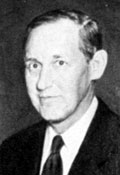 |
Harry
Hopkins (1890-1946), one of FDR’s closest advisors,
was a social worker by background. He managed several New
Deal relief programs, then during the war served as Roosevelt’s
private emissary to Churchill and Stalin and as administrator
of the Lend-Lease program. See Robert L. Sherwood, Roosevelt
and Hopkins, an Intimate History (1948) and June Hopkins,
Harry Hopkins: Sudden Hero, Brash Reformer (1999). |
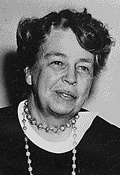 |
Eleanor
Roosevelt (1884-1962), wife of the president, was
by 1941 a noted leader in all manner of efforts to ease the
plight of the poor and neglected in American society, particularly
blacks, migrant workers, and women. Because FDR was unable
to travel freely (polio had left him wheelchair-bound), Mrs.
Roosevelt traveled incessantly to investigate conditions throughout
the country. Through her newspaper column, books, and speeches,
she had an immense shaping influence on humanitarian opinion
in the US. FDR did not always follow her advice - she did
not “run the country,” as conservatives often
claimed - but she did have his ear. Among the figures listed
in this prospectus, Mrs. Roosevelt was particularly close
to Harry Hopkins. Biographies: those by Joseph P. Lash (Eleanor
and Franklin, 1971) and Blanche Wiesen Cook (Eleanor
Roosevelt, 1992) are particularly good. See also The
Autobiography of Eleanor Roosevelt (1961) and It
Seems to Me: Selected Letters of Eleanor Roosevelt, ed.
Leonard C. Schlup & Donald W. Whisenhunt (2001). |
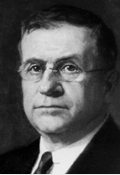 |
Harold
L. Ickes (1874-1952) was Secretary of the Interior
throughout the Roosevelt years. He became involved in the
Japanese-American matter because the agency set up to manage
the internment camps, the War Relocation Authority, came under
the Department of the Interior. Ickes was always troubled
about the internment and pressed FDR to end it at the earliest
possible date. See The Secret Diary of Harold L. Ickes
(1953-54). |
OUTSIDERS
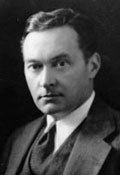 |
Walter
Lippmann (1889-1974) was one of the most influential
political philosophers of 20th-century America. A brilliant
writer, he created the modern role of the newspaper columnist
who comments on national and international affairs. While
just in his 20s, Lippmann emerged as a leading progressive
intellectual who wrote one of the key texts of the progressive
movement in Drift and Mastery (1914), co-founded the New Republic
magazine (1915), advised President Woodrow Wilson during World
War I, and drafted Wilson’s historic Fourteen Points
speech (1918). In the 1920s Lippmann grew more doubtful about
the capacity of the mass public for intelligent self-government
(Public Opinion, 1922). From 1931 until 1962 he wrote the
syndicated column “Today and Tomorrow” for the
New York Herald Tribune. After World War II Lippmann
coined or at least popularized the term “the Cold War”
and opposed McCarthyism and the Korean and Vietnam Wars. There
has been a recent revival of interest in Lippmann because
intellectuals assume that were he around today, he would oppose
the US intervention in Iraq. Biography: Ronald Steel, Walter
Lippmann and the American Century (1980). |
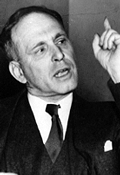 |
Roger
Baldwin (1884-1981) was founder and spokesman for
the American Civil Liberties Union. There are various works
on the ACLU and biographies of Baldwin including Robert C.
Cottrell, Roger Nash Baldwin and the American Civil Liberties
Union (2000). Baldwin was not directly involved in discussions
of US policy toward the Japanese Americans in 1942, but he
and other leaders of the ACLU debated the organization’s
policy and did try to influence some leaders in Washington
including Biddle and FDR himself. See Peter Irons, Justice
at War (1983). |
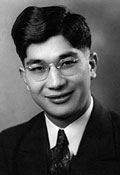 |
Mike
M. Masaoka (1915-91), a controversial figure among
Japanese Americans, in 1942 was national field secretary of
the Japanese American Citizens League (JACL), an organization
founded in 1928 that reflected the outlook and interests of
the Nisei or second-generation Japanese Americans. The JACL
was not at root a protest or civil-rights organization; it
cooperated with the relocation effort in the spring of 1942.
Masaoka himself was interned but later in the war volunteered
for the 442nd Regimental Combat Team, which fought in Italy
and France. Books by Peter Irons, Kai Bird, and Roger Daniels,
among others, contain information about Masaoka and the JACL.
Masaoka’s autobiography is They Call Me Moses Masaoka:
An American Saga (1987). See also Bill Hosokawa, JACL
in Quest of Justice (1982). Web sites show that many
Japanese Americans today believe that Masaoka should have
led an effort to protest the relocation, but would this have
been a realistic strategy in 1942? |
|
 |